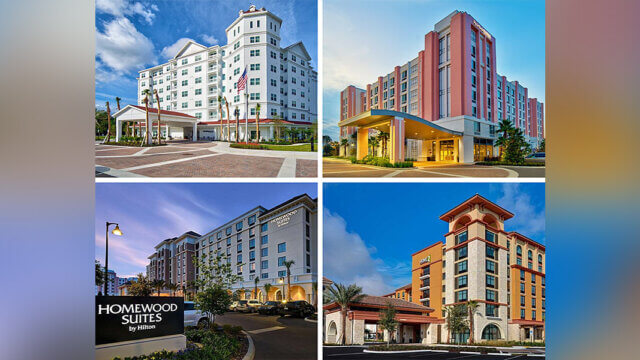NEW YORK—JLL has released new market insights showcasing activity in the hotel sector for the first half of 2019. According to the firm, investor sentiment remains optimistic but realistic, with hotel investment expected to be a second-half story as H1 2019 volume marks a 28% decrease.
Below are the highlights from JLL:
Demand: Lodging fundamentals continue to move higher, but at a slower pace.
- Despite a deceleration of the broader global economy, the U.S. continues to post healthy economic growth, which supports the ongoing strength of the hotel sector. In the first half of 2019, demand growth marginally outpaced supply growth, with room nights sold increasing 2.1% and room nights available increasing 2%.
- According to the U.S. Travel Association, both domestic and international travel to the U.S. is forecasted to continue to grow, albeit at a noticeably slower rate. The upward trend is largely supported by solid domestic travel demand in both the leisure and business segments.
Top transactions: Transaction volume is down approximately 28% in H1 2019.
- The decline in the first half of 2019 is attributable to 70% less portfolio sales activity. The two largest portfolios by volume to transact in H1 2019—Noble Investment Group’s multi-state hotel portfolio ($229 million) and Summit’s six-hotel portfolio ($156.8 million)— were primarily made up of high-quality, select-service hotels.
- Single-asset hotel transactions activity remained consistent in H1 2019 relative to H1 2018 at approximately $9 billion, driven by the sale of luxury assets in resort markets, such as South Florida and Lake Tahoe. The most notable luxury asset transaction in H1 2019 was the sale of the 1,047-room Waldorf Astoria Boca Raton Resort, in a transaction which was completed in early June. High-quality asset sales across gateway markets, such as Boston, New York and San Francisco, also propped up single-asset volume.
- Investors remain interested in luxury assets, which are trading for below replacement cost, and continue to face a more limited supply pipeline.
Markets: RevPAR performance varies by major markets.
- Twelve of the top-25 markets saw growth in RevPAR in H1 2019. The market capturing the highest increase in RevPAR at 8.1% was San Francisco, which continues to benefit from the expansion of the Moscone Convention Center completed in 2018.
- Nashville has demonstrated its momentum as a top secondary market with RevPAR growing nearly 4%, despite supply increasing by 7.9% in year-to-date June 2019.
Sources of capital: Private equity groups dominate the marketplace; foreign investment concurrently marks uptick.
- Private equity groups were active acquirers of hotel real estate and accounted for 45% of total volume, demonstrating the record level of dry powder on hand and the desire to allocate to hotel real estate.
- Stock price volatility in the first half of the year has limited REITs’ hotel investments to $1.5 billion, or 15% of total volume.
- After a slow start to the year, foreign investment accounted for 12% of volume in Q2 2019. Cross-border capital is expected to continue following an upward trend in the second half of the year with the potential lessening of currency hedging costs and U.S. interest rates declining by a larger margin than interest rates internationally.
Sources of risk: Slowing growth in fundamentals and challenging operating environment remain top of mind.
- After growing 2.8% in 2018, RevPAR is expected to record more moderate growth in 2019 of 2%, driven entirely by growth in room rates as opposed to occupancy.
- Tight labor markets resulting in a national unemployment rate of 3.7% is increasing labor costs and placing downward pressure on hotel profits.
- Hotels that charge resort fees—daily charges for using the hotel’s facilities—are facing public backlash, as the government pushes for more rate transparency. Operators leveraging these fees to drive profit margins will have to think more creatively for other sources of revenue.

